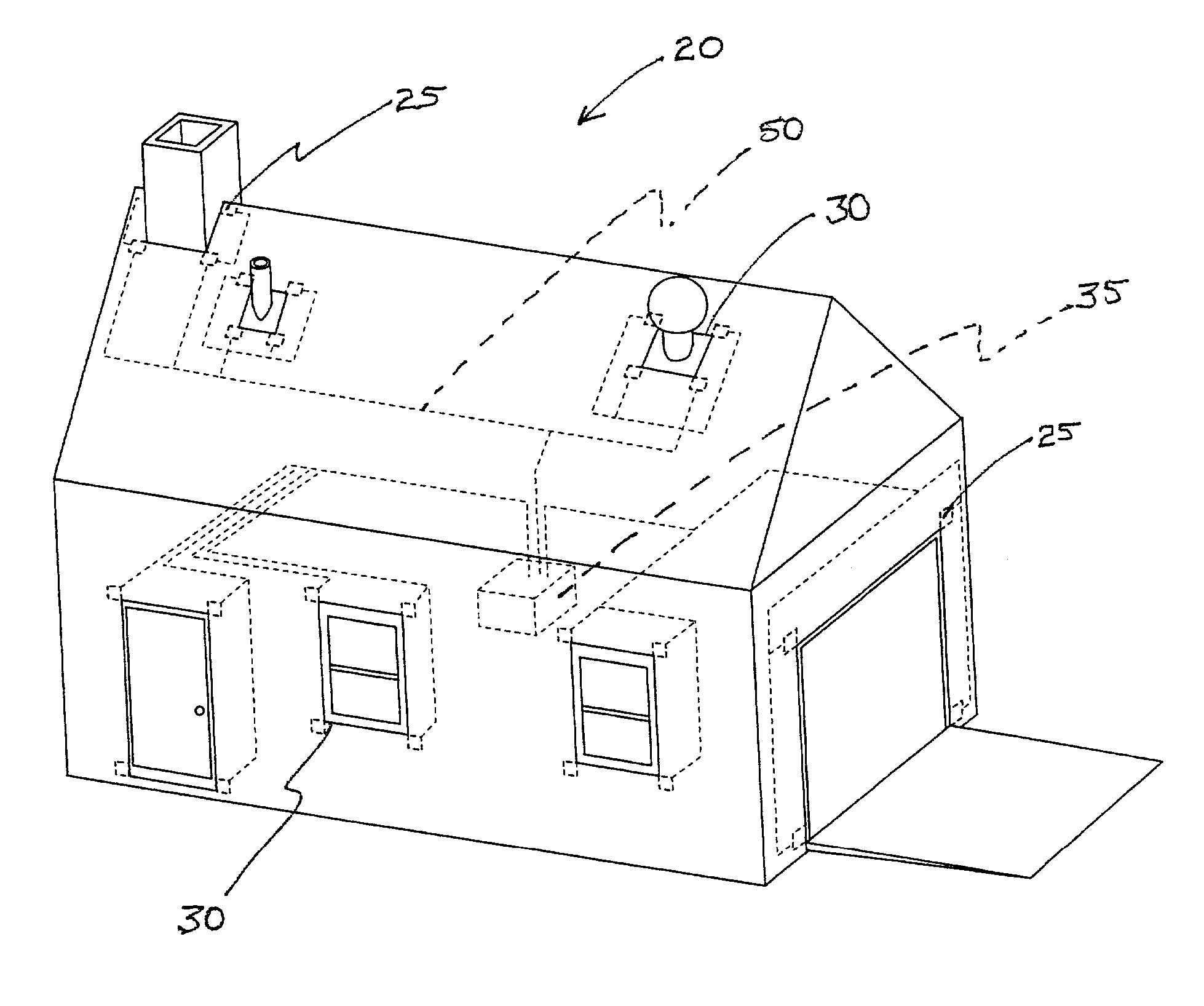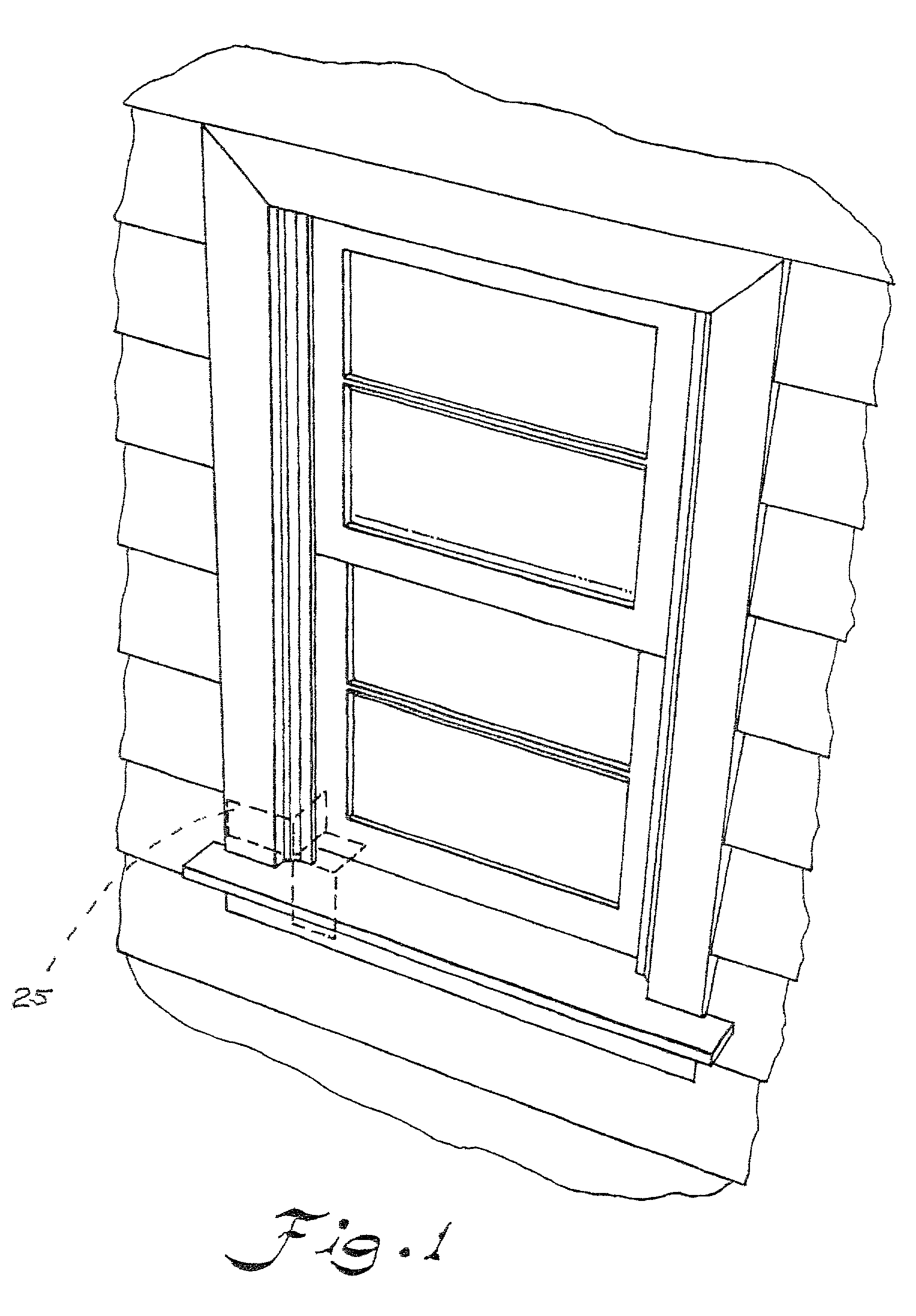Moisture detection and location system
a moisture detection and location technology, applied in the direction of fluid tightness measurement, instruments, electric signalling details, etc., can solve the problems of unwanted moisture may nevertheless intrude into the structure, and unfavorable structural moisture intrusion into the building envelop
- Summary
- Abstract
- Description
- Claims
- Application Information
AI Technical Summary
Benefits of technology
Problems solved by technology
Method used
Image
Examples
Embodiment Construction
[0032]Reference now will be made in detail to the presently preferred embodiments of the invention, one or more examples of which are illustrated the drawings. Each example is provided by way of explanation of the invention, and is not meant as a limitation of the invention. For example, features illustrated or described as part of one embodiment can be used on another embodiment to yield yet another embodiment. It is intended that the present application includes such modifications and variations as come within the scope and spirit of the invention.
[0033]The same numerals are used to refer to the same features throughout the drawings and the text that follows.
[0034]Referring to the appended Figures in general, a system 20, particularly a moisture detection and location system, according to the invention is illustrated. System 20 is not limited in its field of use, and has usefulness in any environment in which it is desired to separately detect and locate moisture at a plurality of...
PUM
 Login to View More
Login to View More Abstract
Description
Claims
Application Information
 Login to View More
Login to View More - R&D
- Intellectual Property
- Life Sciences
- Materials
- Tech Scout
- Unparalleled Data Quality
- Higher Quality Content
- 60% Fewer Hallucinations
Browse by: Latest US Patents, China's latest patents, Technical Efficacy Thesaurus, Application Domain, Technology Topic, Popular Technical Reports.
© 2025 PatSnap. All rights reserved.Legal|Privacy policy|Modern Slavery Act Transparency Statement|Sitemap|About US| Contact US: help@patsnap.com



